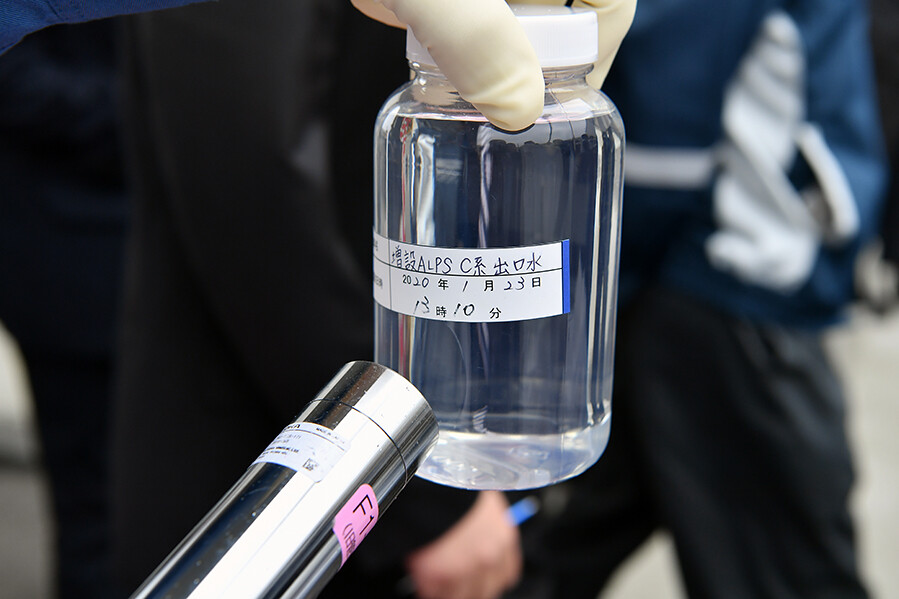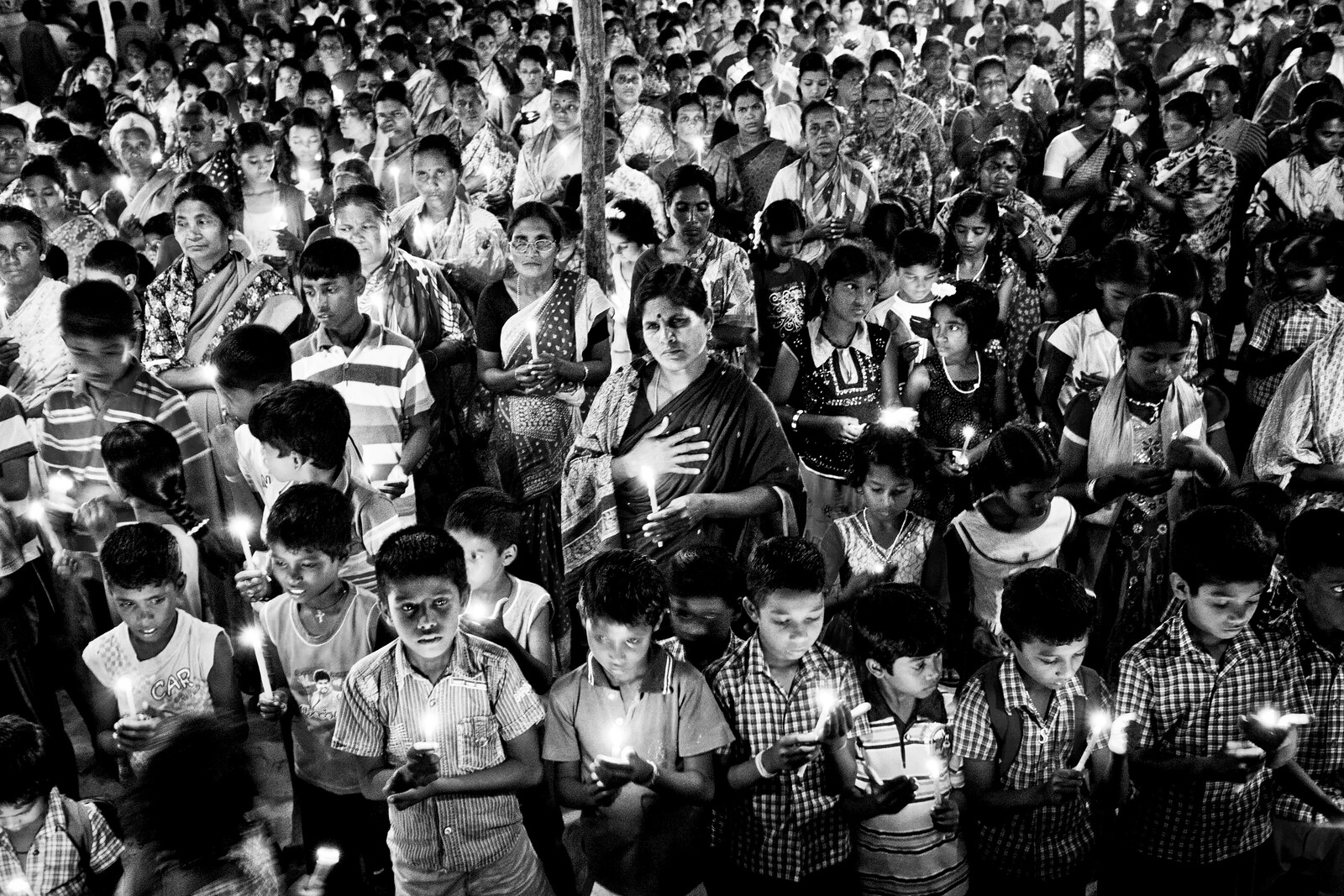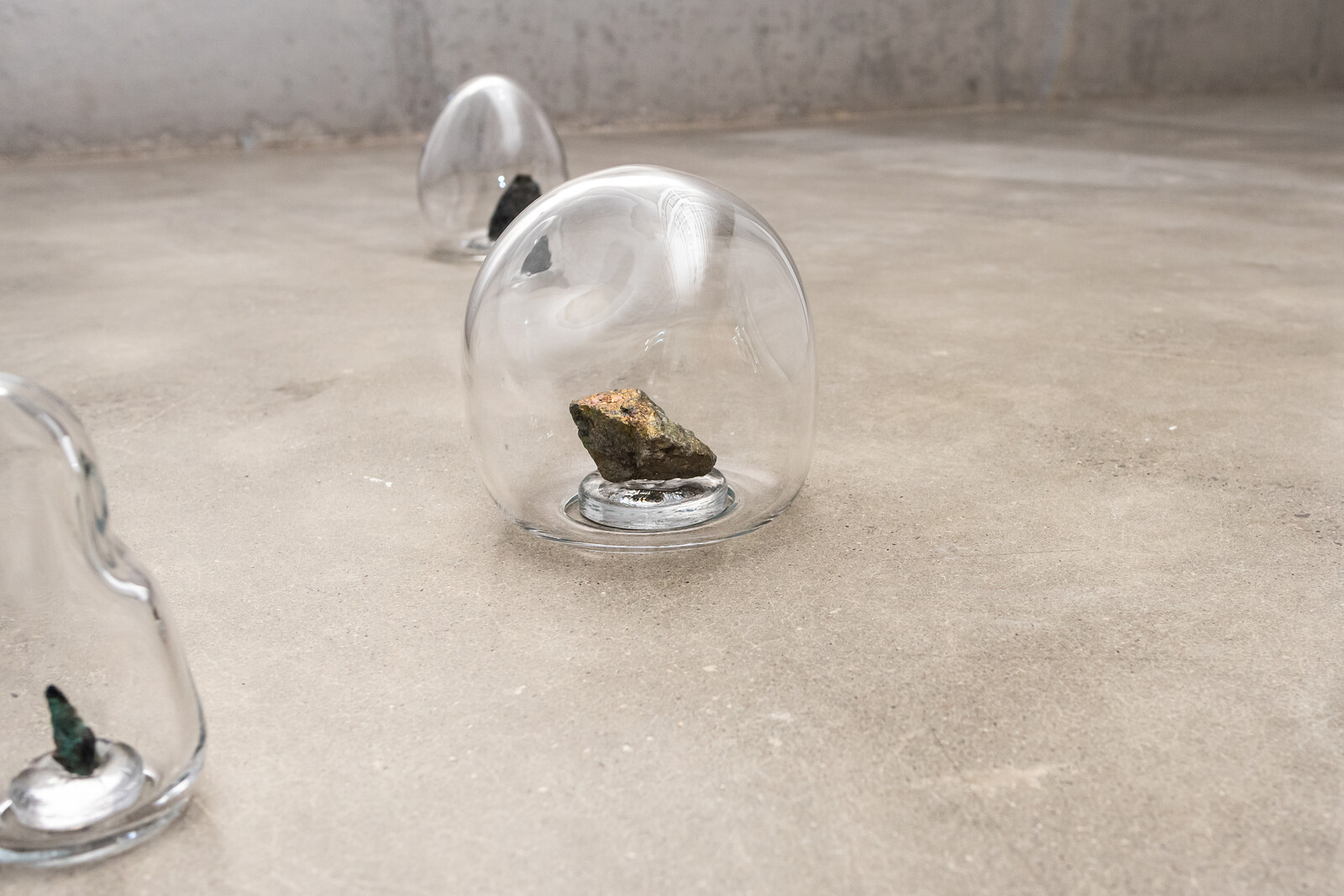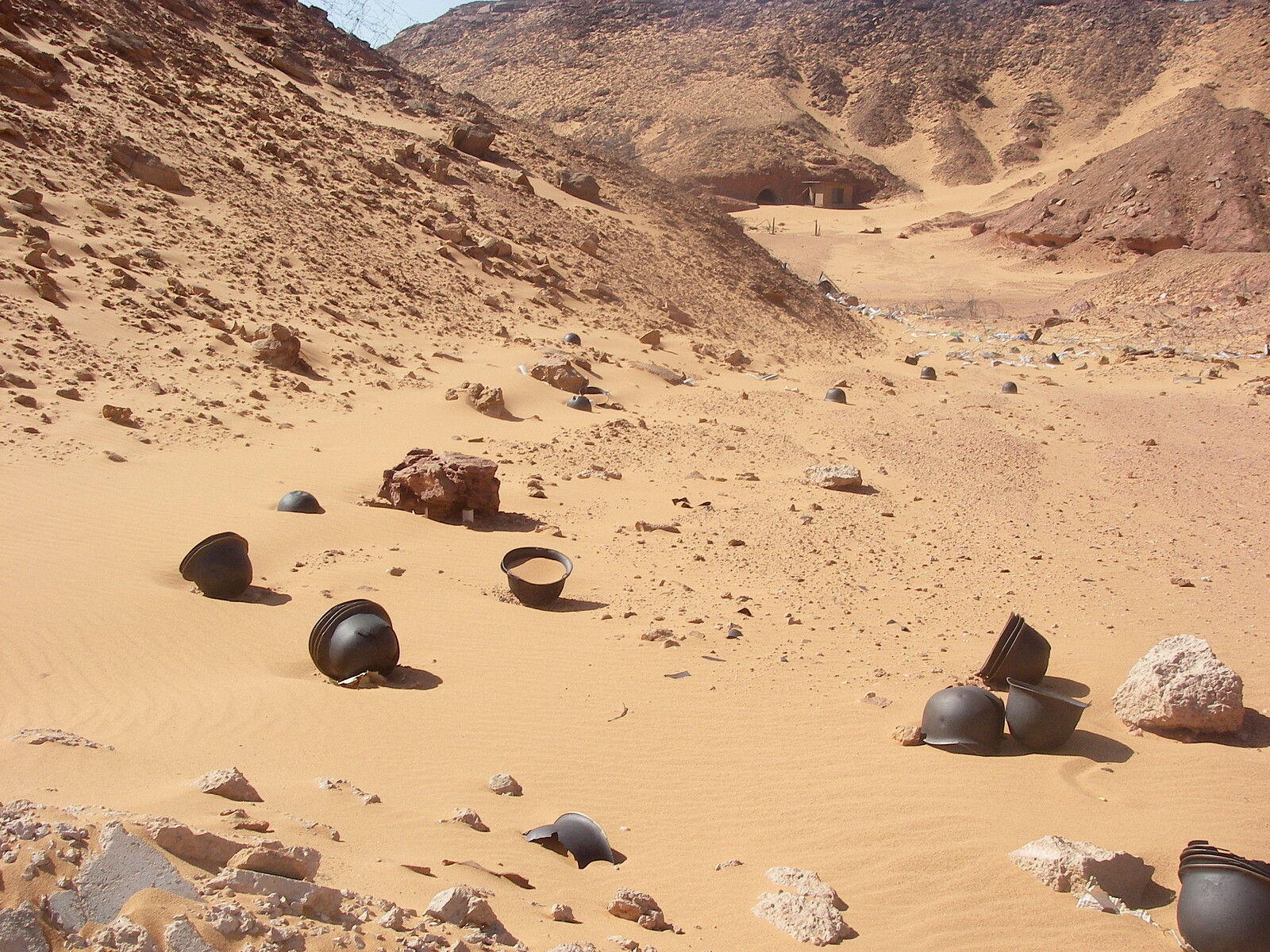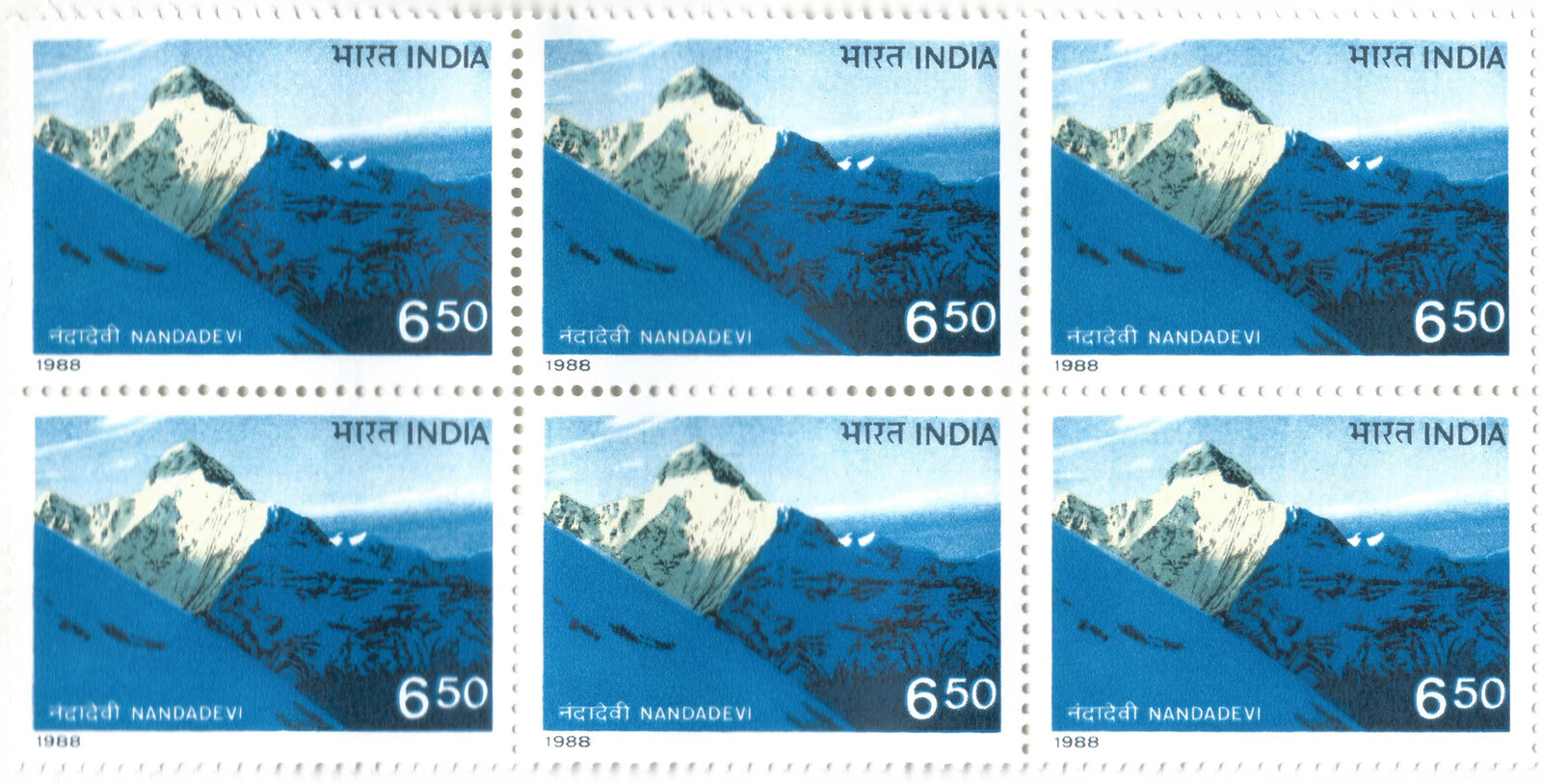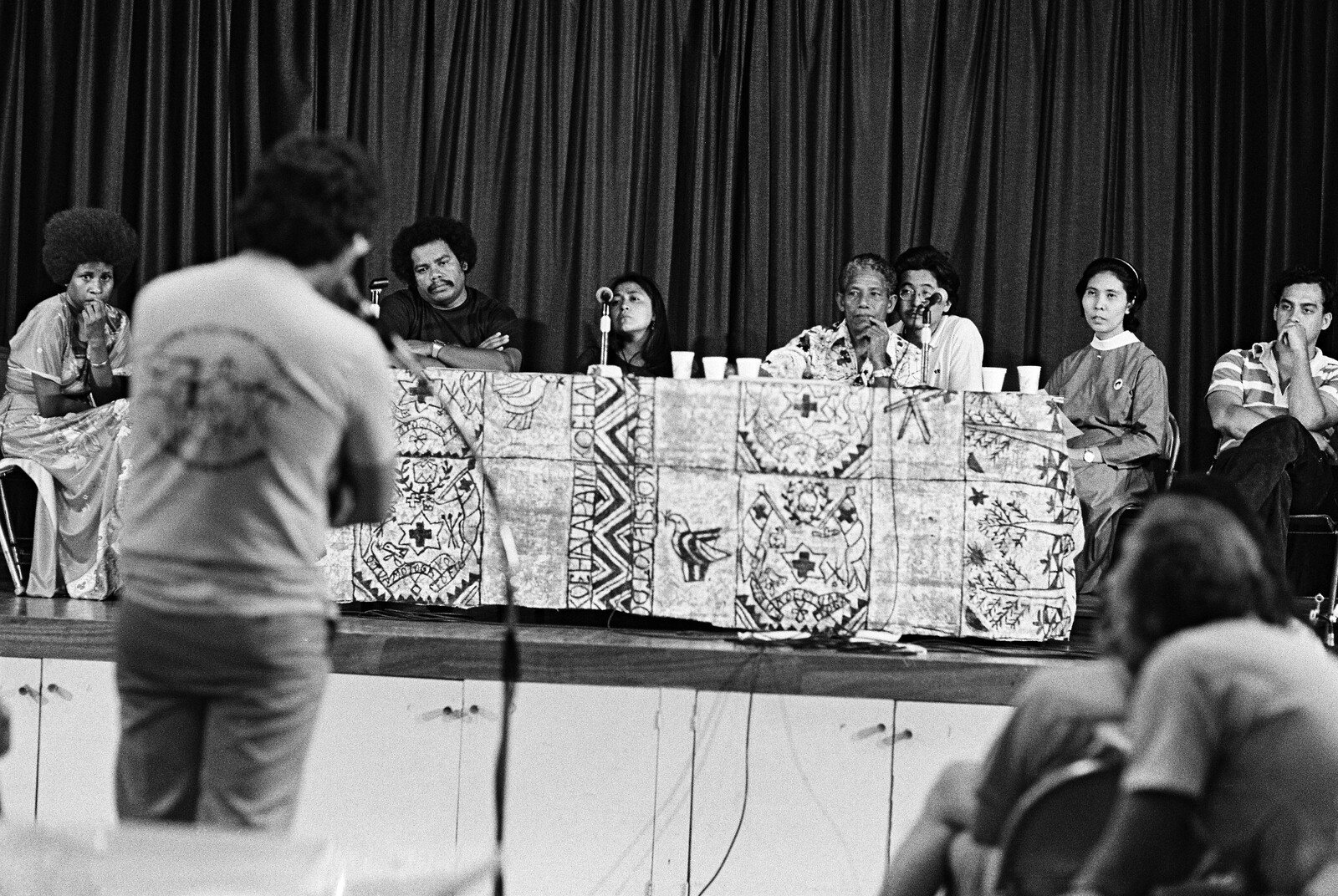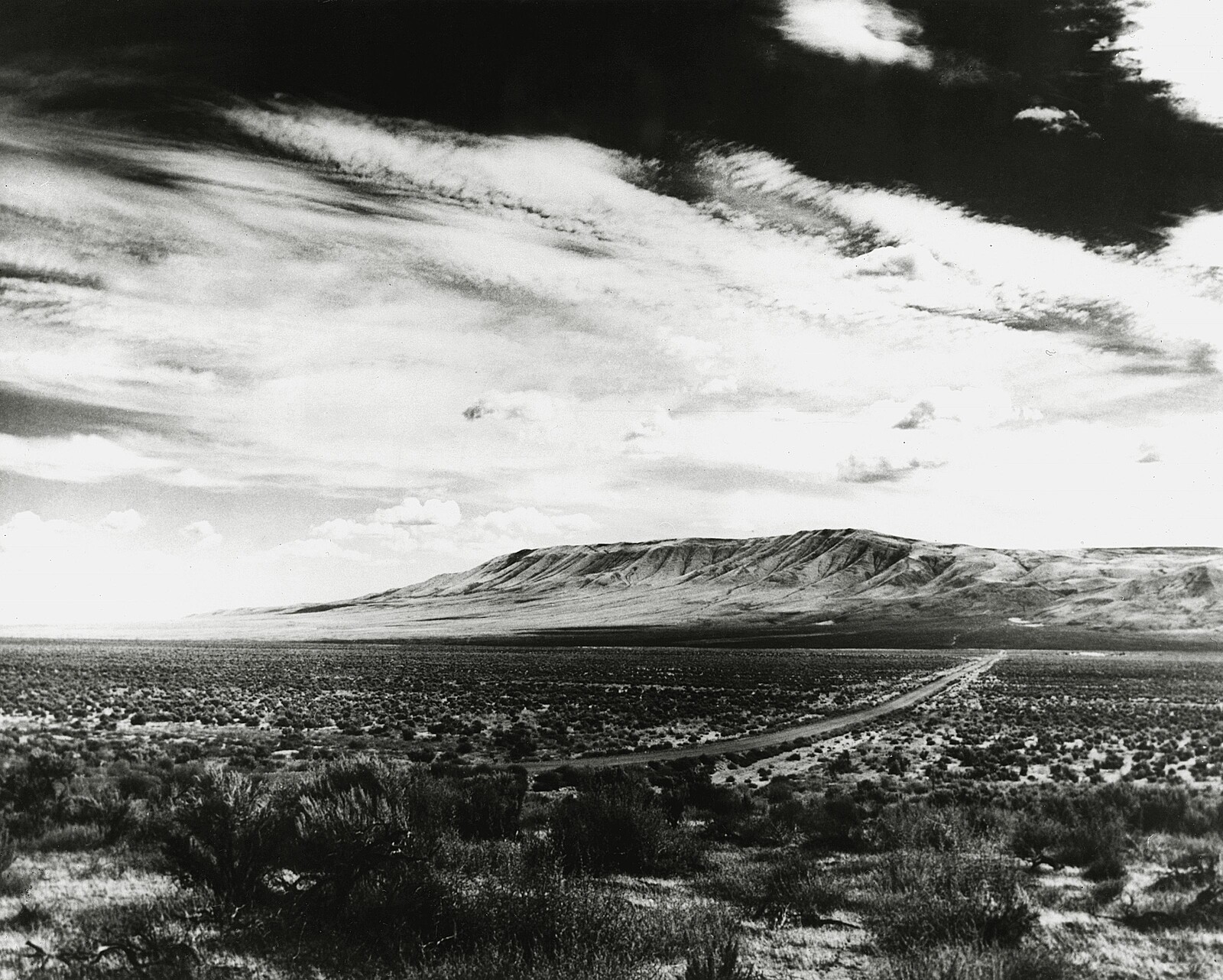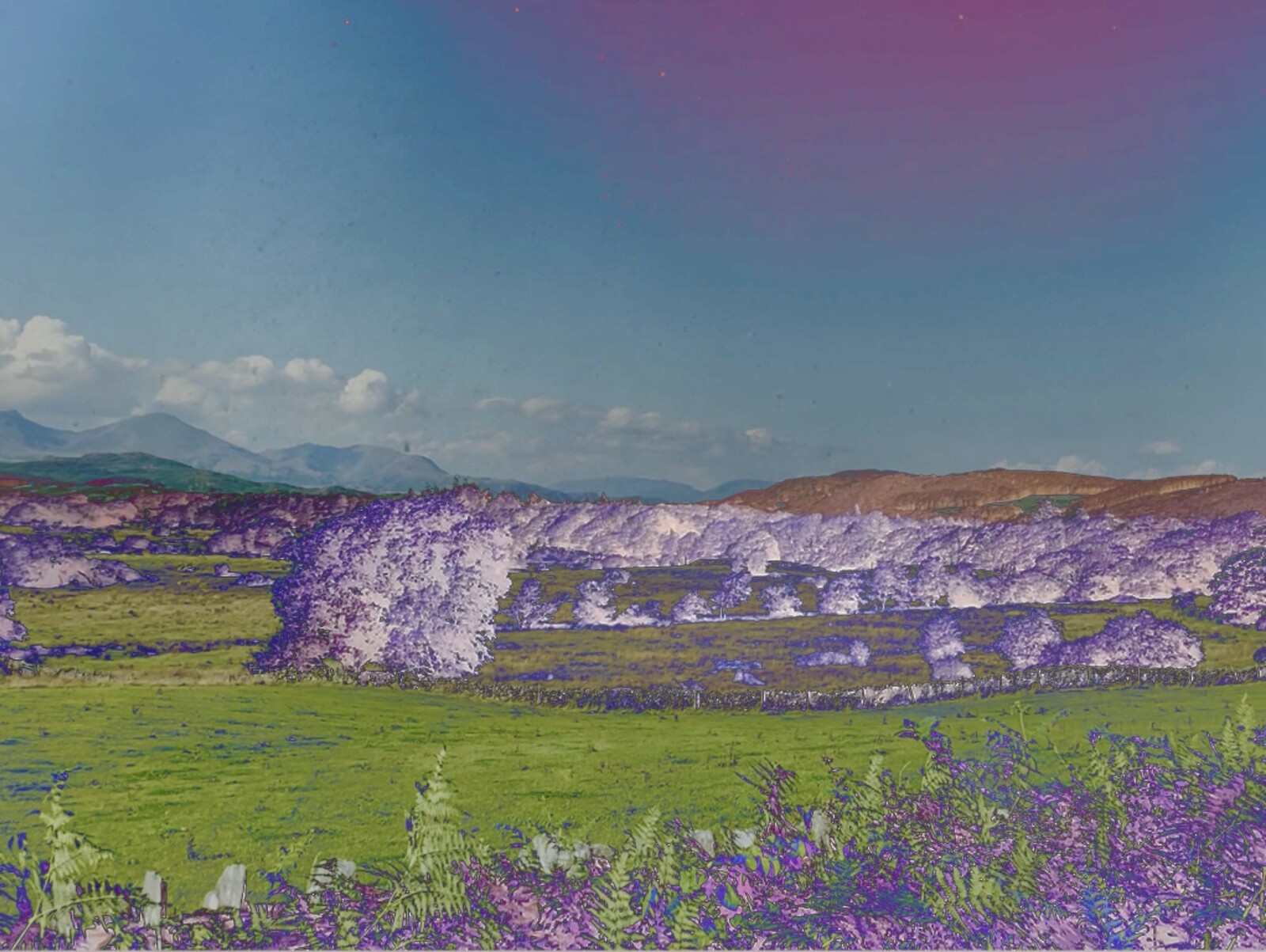The Janus Faces
While the world tackles a myriad of calamities—a pandemic, floods, wildfires, hurricanes, famine, systemic racism, structural inequality, and police violence, among others—the possibility of nuclear disaster inexorably returns to arrest our attention. For, at any moment, human error, machinic breakdown, natural cataclysm, NIMBYism, or war could trigger a nuclear catastrophe, all the while radioactive substances are endlessly accumulating and irreversibly mutating our living environment. Rather than process the fatal consequence of such catastrophe, however, with each recursion of nuclear threats we instead become increasingly conditioned to its imminence, numbed by the intermingling of fate and contingency. And despite the fact that each event is shocking in its singularity, every time one occurs, we only become more inured to its destined repetition. The Janus faces of nuclear power—as both weapon and energy—only continue to manifest in different contexts across the world.1
The Russian invasion of Ukraine resurrected threatening exchanges on the possible use of nuclear arms. Russian President Vladimir Putin’s threats to use tactical nuclear weapons have exposed the limits of the West’s reliance on nuclear deterrence, a strategy premised on the idea that a nation is protected from military attack if it possesses nuclear weapons and is therefore poised to launch a crushing counterattack.2 This time around, Putin deployed this strategy in a different way: not to protect Russia, but rather to facilitate its aggression on Ukraine by deterring military intervention by Western nations. Unprecedented, this preemptive appropriation of deterrence proves Russia’s desperation to perform its nothing-to-lose readiness for nuclear war.
The Russian threat is novel in another way. During the invasion of Ukraine, the Russian Armed Forces have attacked and occupied two nuclear power plants: the Zaporizhzhia Nuclear Power Station and the Chernobyl Nuclear Power Plant. Alarmingly, the Russian offensive has unfolded carelessly vis-à-vis nuclear facilities that require extreme precautions. This past summer, Russian attacks caused fires at Zaporizhzhia’s nuclear plant—Europe’s largest—risking a disastrous scale of radioactive fallout.3 In Chernobyl, damage to the nuclear plant incurred during Russian attacks critically endangered its operations and reportedly exposed Russian soldiers to radiation.4 Whether intentional or negligent, Russian behavior created a precedent of weaponizing nuclear power plants by seizing them and treating them carelessly.
The reckless measures that constitute the Russian invasion of Ukraine are reminiscent of the self-immolating decision of the Empire of Japan to wage an all-out war against the Allied Forces during World War II. An expansive empire would do anything to sustain its impetus when it is excluded from the pact of global order. As a result of what happened to Japan after the war, however, the cry of “no more Hiroshima and Nagasaki” was shared nationally, and the country adopted the so-called “three non-nuclear principles” of non-possession, non-production, and non-introduction. But recently, the Japanese government approved a TEPCO (Tokyo Electric Power Company) project to release 1.25 million tons of radioactive wastewater from the crippled reactors of Fukushima Daiichi into the Pacific Ocean.5 The Pacific Ocean as the ultimate planetary commons is secondary to the immediate safety of national territory.
Furthermore, the war in Ukraine has provoked a debate among Japanese right-wing politicians about the option of nuclear armament.6 Article Nine of Japan’s constitution forbids the nation to engage in war for any reason other than self-defense. Japanese nationalists have long been inclined to expand the interpretation of Article Nine, as well as the US/Japan Security Treaty (and especially its clauses on “the Right to Collective Defense”), to establish Japan as a “normal” nation-state with a “regular” military. One of their focuses has been Japan’s acceptance of US nuclear arms within its national territory. The argument of pro-armament politicians is that, since Japan de facto relies on US nuclear arms for deterrence against shared hypothetical enemies—Russia, China, and North Korea—it should publicly accept the presence of nuclear weapons in US military bases in Japan. The argument even goes so far as to suggest officially consenting to the US’s use of nuclear weapons when facing extreme hostilities.7 For people in Japan, this means that their land—the frontline facing these hypothetical enemies—would be the primary target of nuclear war. What is less known, but substantially devastating in this situation, is Japan’s ongoing militarization of the Nansei Islands—its subtropical territories located between Kyushu and Taiwan—in a joint initiative with the US to confront Chinese advances in the area. The largest island, Okinawa, provides one third of its land to US military bases and has long been the center of an anti-US military base movement.
The pro-nuclear armament movement in Japan consists primarily of ruling politicians and industrialists who have inherited an imperial ambition embodied by the slogan “Rich Nation, Strong Troops,” which was first established with the Meiji Restoration in 1868 and has persisted throughout phases of imperialist expansionism and postwar consumerism. These same leaders also steered the introduction of nuclear energy for civilian use in the 1960s, never losing sight of the transferability of nuclear fission from energy to weapon. Once the target of the most devastating atomic bombing, the nation seems ready and willing to imagine itself differently in a future chapter of nuclear history.
After the disastrous accident at the Fukushima nuclear facilities in 2011, Japan paused activity at all its nuclear plants. But after commencing its second term at the end of 2012, the Abe administration revived pro-nuclear policy and restarted the plants one by one. The only country in the world that has experienced both nuclear attacks and a major nuclear accident nevertheless maintains a pro-nuclear policy, and argues for the option of future nuclear armament. Protests in Japan against the dumping of radioactive waste into the ocean have been unable to halt this sanctioned environmental contamination. Along with war, this planned act embodies one of the starkest contradictions confronted by the world today: the discrepancy between national interests (and the pollutants it creates to achieve them) and the sustenance of common resources and planetary well-being.
Apocalyptic Blindness
The Janus faces of nuclear power reify the bond between capitalism and the state.8 This dualism also incapacitates our political thinking and acting, a condition of inertia that the philosopher Günther Anders called “blindness in the face of apocalypse.”9 Meditating upon the apocalyptic aspect of our world following the bombing of Hiroshima and Nagasaki in 1945, Anders argues that no human being is capable of imagining anything of such horrifying magnitude as the elimination of millions of people, but that, once invented and used, the atomic bomb—and the unthinkable as such—would inevitably invite more atrocities. It would do so in each event (contingency) and possibly until the end of all (fate). With its destined repetition, it seems that we become increasingly blinded to the interaction between fate and contingency that is inherent to nuclear calamity, and, as such, become increasingly blinded not only to the effects of nuclear weapons, but also to the ways that capitalist nation states produce, maintain, and depend upon nuclear infrastructures.10
Anders outlines the effects of this in his 1962 essay “Theses for the Atomic Age,” and describes how this blindness, in twenty-two phases, contributes to the ongoing movement of the world to “the End.”11 In terms of “production,” for instance, he speaks of “us” as “inverted Utopians” who are incapable of “realizing the realities which we ourselves are producing.”12 While the “production” Anders implies here is primarily nuclear weapons, we can also read it as the complex productive nexus of which nuclear production is just one part. Capitalist relations of production and consumption, then, do not just alienate us, but also lead us towards the End.
With the unthinkable violence of World War II, from the Holocaust to the use of nuclear weapons on Hiroshima and Nagasaki, Anders claims that alienation has become a general condition. In this sense, he observes that, “activities which formerly had occurred as action and were meant and understood as such by the acting subjects themselves, now have been replaced by other variants of activity.”13 In terms of “working,” then, whatever anyone does is deemed morally neutral—at least at the site of work itself—because it is nothing but “work.” The other type of activity is “triggering,” which is the “push of a button that sets in motion a whole chain of secondary triggerings—till the end-result—never intended, never imagined, by the first button pusher—consists of millions of corpses.”
The apocalyptic blindness that Anders observes has now become the general condition for living in the world of capitalist nation states. Nuclear threat is just one of many catastrophes that bind us in a numbing recursivity of disastrous events that prefigures the End. Yet as the Marxist philosopher George Caffentzis proposes, “the nuclear power industry is becoming just One (industry) among Many and, at the same time, it is the One the Many are becoming.”14 Put differently, as an industry that continues to reproduce itself by expanding a task that it can never fulfill—the endless accumulation of nuclear weapons and power and the endless quest for utopian technology that might be able to treat the radioactive waste it endlessly produces—the nuclear serves as a model for contemporary capitalism.
Anders’s theses illuminate the process of nuclear recursivity that entraps us between fate and chance. Here, then, lies the lingering question of whether it is possible to abolish the Janus face of nuclear power. Any answer to this question is predicated on changing the world of the capitalist nation state. For the problem of nuclear power is not limited to the sublimity of harms and destructive power of nuclear fission. The nuclear and its sublimity incapacitates our thinking and acting; it shapes society, it binds the economy, and it creates conflictual relations among nation states. Its haunting power is onto-metaphysical, socio-economical, and techno-political at the same time. Ousting nuclear power would therefore require a complex process that goes hand in hand with the revolutionary process of decomposing and recomposing the world of the capitalist nation state. And, conversely, dismantling nuclear power is a necessary step in smashing capitalism and creating a different planetary existence.
Volcanic Archipelago
Reflecting on the logical structure of destiny vis-à-vis contingency in the context of nuclear menace, the philosopher Jean-Pierre Dupuy writes: “the dialectic of fate and chance permits us to keep just the right distance from the black hole of catastrophe: since apocalypse is our fate, we are bound to remain tied to it; but since an accident has to take place in order for our destiny to be fulfilled, we are kept apart from it.”15 This dialectic is crucial for thinking further in our dark prospect. Between fate and chance, there still exists a space where we can intervene, for the time of fate is undetermined. Fate is realized only by chance, yet it exists in a distinct ontological category from chance. This dialectic is not just applicable to man-made nuclear disaster, but also to natural ones, such as earthquakes or seismic activity. The problematic of nuclear power in Japan has always been haunted by the imminent possibility of earthquakes, due to the location of the Japanese archipelago on top of the Ring of Fire. Dupuy’s dialectic allows us to think anew about the fatal match between nuclear facilities and earthquakes in Japan, and, more broadly, that between capitalism and nature.
The nuclear apparatus, though extremely difficult, can technically be removed. Volcanic land cannot. Both nuclear disasters and earthquakes can exert tremendous violence, but it is only the former that affects vital activities with the power of genetic mutation for colossal lengths of time. Destruction caused by earthquakes alone can be restored, but the effects of nuclear disaster are irreversible. Still, the nuclear is part of our society, and its recursivity embodies capital’s drive for eternal growth, all while entrapping activities necessary to sustain our lives in a consumerist society. Conversely, we are used to perceiving social infrastructures as the guardian from natural disasters, yet it is volcanic mountains and stormy seas that are actually the ultimate providers of nourishment. What would it mean to affirm, then, as opposed to reject and defend against seismic recursivity? Lives and culture of the volcanic archipelago might tell us something.
Lafcadio Hearn, a.k.a. Koizumi Yakumo (1850–1904), was a Greek-Irish-Japanese writer who introduced the culture and literature of Japan to the West.16 In an essay titled “Earthquakes and National Character,” he passionately describes the architectonics of ephemerality nurtured in Japan. Yakumo describes how people in Japan are constantly exposed to the calamities of earthquakes, tsunamis, and typhoons, but nonetheless develop resilience for survival and happiness in these difficult conditions.17 They worshiped these powers as sacred, knowing that they are also give nourishment and resources. Instead of building everlasting stone structures to materially compete with nature and contingency, most Japanese architecture is built with wood, which can flexibly move in response to external forces, and with the expectation that it will be demolished and rebuilt periodically.
The ultimate example of achieving a sense of eternality with ephemeral architectonics is the Ise Shrine in the Mie Prefecture. Presumably designed around the seventh century, it consists of sixty-five rough and humble raised-floor wooden structures, which are said to have originated in the South Sea. None of the structures have any symbols and figures, but they all exist in double. Since its inception, shikinen zokan (ritualistic rebuilding) has been performed, in which old shrines are dismantled and identical new ones are rebuilt on adjacent sites at a predetermined interval of twenty years. Through this, the architecture achieves a sense of infinity and stands in competition with time and contingency. The Japanese architect Arata Isozaki associates this mechanism with “life forms [that] sustain their identities: selection from a pool of genes in response to certain external conditions.”18
The Ise Shrine was built during the reign of Yamato Kingdom, which is the alleged ancestor of today’s emperor. But in the Japanese archipelago, there are older layers of culture dealing with the power of nature. In the pre-Shinto, pre-Buddhist era, animistic spirits or gods (kami) did not have a stable presence or solid figure. Instead, they embodied the invisible and ungraspable power of nature. Thus, they visited on special occasions and occupied yorishiro; an object or site capable of attracting kami and hosting ceremonies. Their worship involved a complex strategy for dealing with the ambiguous forces of kami (dreadful and merciful): monoimi (abstinence for welcoming), misogi (purification for worshiping), and harai (exorcism for repelling), along with various forms of chanting and dancing. These techniques, based as they are on a mixed and contradictory relationality with the sacred, can teach us about alternative ways to live and die in relation to the violence of nature.
After the Great East Japan Earthquake on March 11, 2011 that triggered a tsunami and the Fukushima nuclear accident, a theorist who had come from Japan’s 1968 student movement, Takashi Tsumura (1948–2020), proposed that, instead of dreading and fearing earthquakes, we should learn how to live and die with them. A teacher of qigong, he was aware that certain non-western techniques of body exercises—such as katsugen of Noguchi Seitai—imitate seismic waves.19 Tsumura even claimed that “Katsugen might have been invented as a method to reconstruct the vital order by creating an earthquake from within the body and thereby destroying the outworn order of everyday life.”20 Here, earthquakes are seen to hold a positive power of revitalization.
Tsumura also fashioned an imaginary reading of the early history of Japan, focusing on the conflicts between the Yamato Kingdom and the nomadic tribes of indigenous people.21 Japan’s statehood, based upon emperor worship, has long insisted that this ancestral kingdom originated in Japan. But recent historiographies show that the Yamato Kingdom could have come from the Asian continent; that they could have originally been an equestrian race in the northeast who invaded the Japanese Archipelago.22 The Yamato conqueror, according to Tsumura, feared active volcanoes in the new territory, since most of the mountains on the continent had been extinct volcanoes. They were also threatened by the mysterious people whose lives were organized around the symbolic system of volcano worship and celebration. Thus, the Yamatos first conquered the areas free from volcanoes—the Kinki Region—and gradually expanded their territories. The biggest battles also took place on the foothills of the biggest volcanoes: the Aso Mountain in Kyushu against the Kumaso people, around the fourth or fifth century, and then on Mount Fuji against the Emishi (or Ainu) people, around the ninth century. For the conqueror, not only the wrath of the volcanoes but also of these natives, whose lives and culture developed with volcanic wrath, were equally objects to tame and conquer.23
This reading of early history is a story of how people lost the techniques to live and die with volcanoes under the rule of Japan. This alternative history suggests the type of political ontology that is necessary to fight against the capitalist nation state today. The struggle requires different sensibilities, ways of life, and cultures from those naturalized in the consumerist lifeworld. All in all, we must reestablish a singular relationship with the earth and planetary movements. This requires that we ask ourselves certain questions: What destiny do we follow? What kind of life and death do we want? These are questions of autonomy. In the volcanic archipelago of Japan, autonomy might only be achieved by relearning how to live and die with the seismic awakening.
As successive generations should not forget: the Manhattan Project first deployed nuclear fission to produce atomic bombs, and only then then redeployed it to produce energy. Ever since, our society has been more familiar with nuclear energy. But the primary byproduct of nuclear reactor activity is plutonium, which can always be used for producing nuclear weapons. The countries that produce the most nuclear energy for civil use as fuel—including, in order of the number of reactors, the United States, France, China, and Russia—are overwhelmingly armed with nuclear weapons as well. For more detailed analyses of the weapon/energy coupling, see Sabu Kohso, “Apocalyptic Capitalism” in Radiation and Revolution (Durham, NC: Duke University Press, 2020).
The idea involves self-refuting contradictions for both sides, and it is uncertain if it ever really worked between the United States and the Soviet Union. On the essential paradox of “deterrence,” see Jean-Pierre Dupuy, “The Nuclear Menace,” in The Mark of the Sacred, trans. M.B. Debevoise (Stanford, CA: Stanford University Press, 2013), 175-194.
Marc Santora, Ivan Nechepurenko, and Matthew Mpoke Bigg, “Ukraine Nuclear Plant Pulled Off Line After Shelling Kindles Blaze,” New York Times, September 5, 2022, ➝.
Jem Bartholomew, “First Thing: Russians flee Chernobyl with radiation sickness, says Ukraine,” The Guardian, April 1, 2022, ➝.
Dennis Normile, “Japan plans to release Fukushima’s wastewater into the ocean,” Science, April 13, 2021, ➝.
Shinzo Abe, the former prime minister and leading Japanese nationalist who was assassinated this past summer, instigated the debate to reconsider nuclear armament.
From an interview of one of the pro-armament politicians, Shigeru Ishiba, October 21st, 2022, ➝.
See Kohso, “Apocalyptic Capitalism.”
Günther Anders, “On the Bomb and the Causes of Our Blindness in the Face of Apocalypse,” in Die Antiquiertheit des Menschen (Munich: Beck, 1980), 1: 233-324.
For clarification, my reading of apocalyptic blindness stresses the agency of the capitalist nation state, rather than humanity in general. For it was not “humanity in general” that created and dropped atomic bombs; it was the United States of America—or, more generally, one could say capitalist nation states in conflict for global hegemony as an extension of Western colonialism.
Günther Anders, “Theses for the Atomic Age,” in The Life and Work of Günther Anders: Émigré, Iconoclast, Philosopher, Man of Letters, eds. Günther Bischof, Jason Dawsey, and Bernhard Fetz (Innsbruck: StudioVerlag, 2014).
Anders, “These for the Atomic Age,” 189.
Anders, “Theses for the Atomic Age,” 191-192.
George Caffentzis, “Against Nuclear Exceptionalism with a Coda on the Commons and Nuclear Power” (presentation, “Crisis and Commons: Prefigurative Politics after Fukushima,” Tokyo University, December 2, 2012).
Jean-Pierre Dupuy, The Mark of the Sacred, trans. M.B. Debevoise (Stanford, CA: Stanford University Press, 2013), 193; René Girard, Violence and Sacred, trans. Patrick Gregory (London and New York: Continuum, 2005).
The name Koizumi Yakumo is in Japanese order: the family name first and the given name second.
Koizumi Yakumo, “Jishin to Kokuminsei (Earthquakes and National Character),” in Koizumi Yakumo Zenshu, vol. 17 (Tokyo: Daiichi Shobo, 1928).
Arata Isozaki, Japan-ness in Architecture, trans. Sabu Kohso (Cambridge: MIT Press, 2011), 138.
See ➝.
Takashi Tsumura, Transversal Discourses, Transversal Connections {Ogi-Oko Ron} (Tokyo: Koshi-sha, 2016), 256.
His reading is based upon Kojiki and Nihonshoki, semi-historical accounts, mixed with myths.
In the postwar period, a historian and archaeologist Namio Egami (1906-2002) initiated a debate on the origin of the imperial family; the point is that the Japanese islands were invaded by a horse-riding people from the continent who went on to establish the archaic Japanese state, Yamato Kingdom, around the late fourth century.
Tsumura, Transversal Discourses, 256.
Half-Life is a collaboration between e-flux Architecture and the Art Institute of Chicago within the context of its exhibition “Static Range” by Himali Singh Soin.
